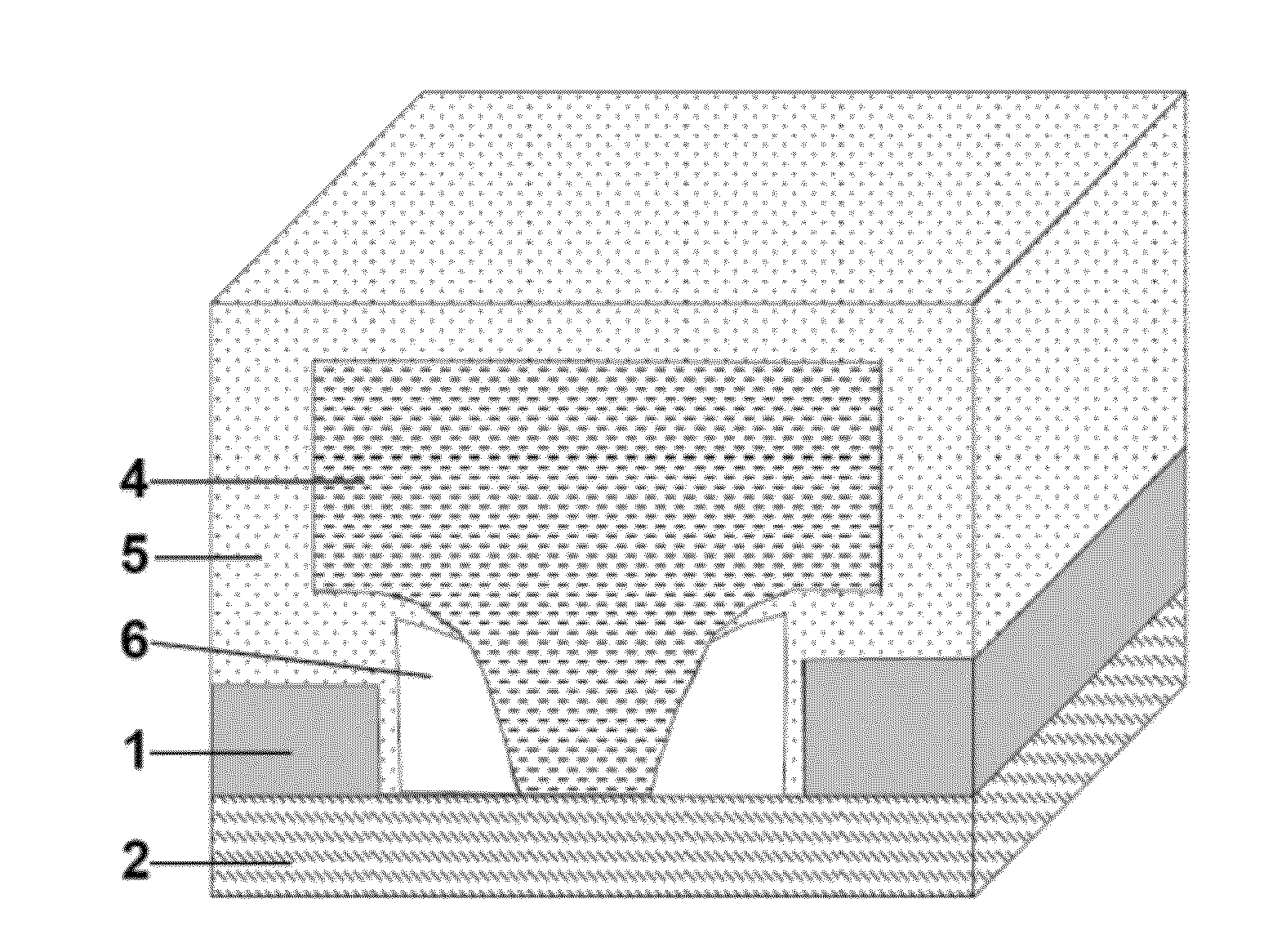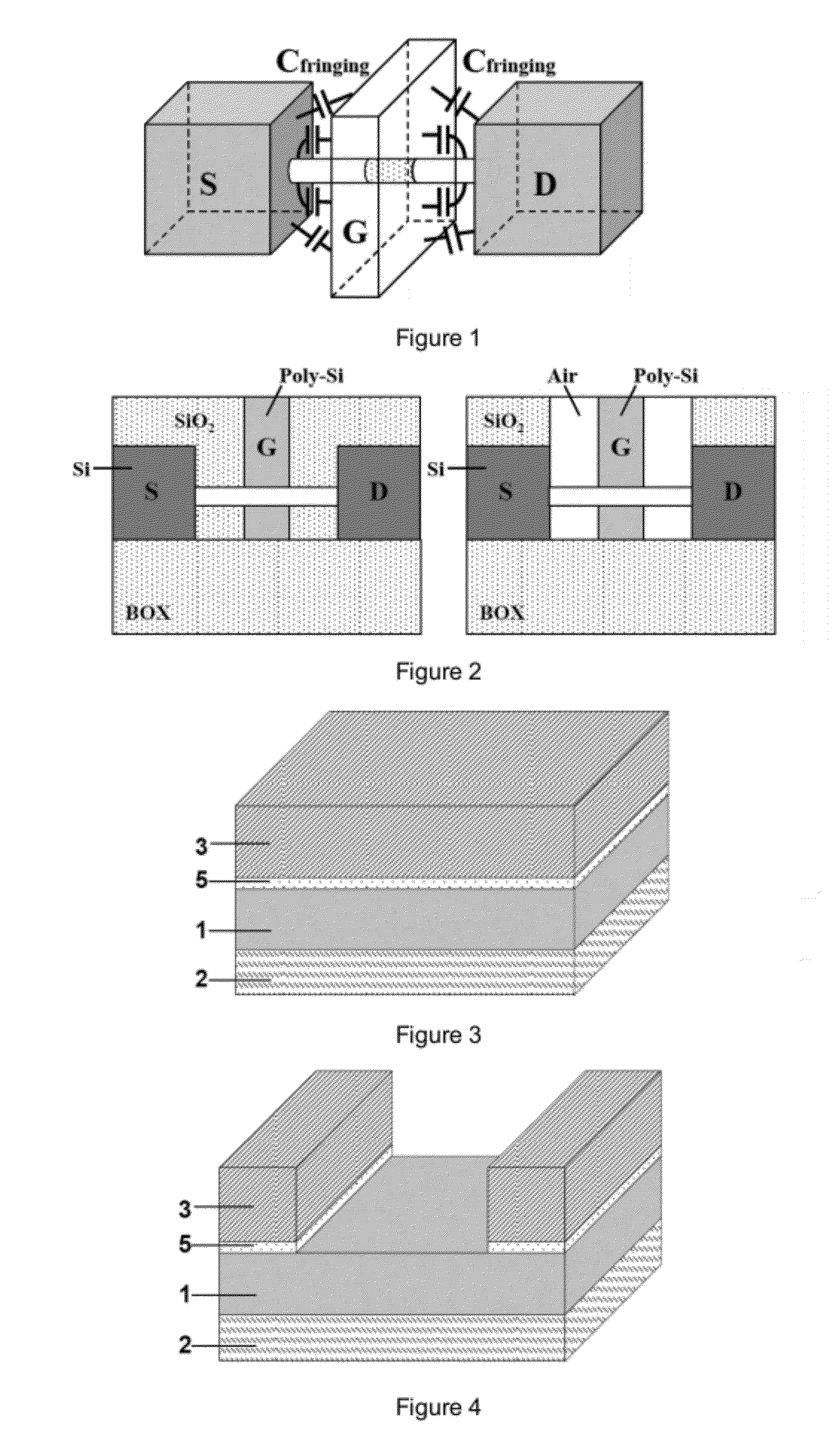Method for fabricating surrounding-gate silicon nanowire transistor with air sidewalls
a silicon nanowire transistor and air sidewall technology, applied in the field of manufacturing technology of ultra-, can solve the problems of increasing the sub-threshold slope, unnegligible issue, fringing capacitance between the gate and the source/drain, etc., and achieves the effect of increasing the transient response characteristic of the device and reducing the parasitic capacitan
- Summary
- Abstract
- Description
- Claims
- Application Information
AI Technical Summary
Benefits of technology
Problems solved by technology
Method used
Image
Examples
embodiment 1
[0043]a process flow for fabricating a surrounding-gate silicon nanowire device with air sidewalls are as follows.
[0044]Starting from a SOI substrate (a thickness of a Si layer over a buried oxide layer is 2500 Å):
[0045]1. A silicon island isolation is performed.
[0046]2. A SiO2 layer is deposited with a thickness of 300 Å by using a low pressure chemical vapor deposition (LPCVD).
[0047]3. A SiN layer is deposited with a thickness of 1500 Å by using a low pressure chemical vapor deposition (LPCVD), as shown in FIG. 3.
[0048]4. A photolithography process is performed to define a channel region and a large source / drain region.
[0049]5. As shown in FIG. 4, the SiN layer is etched by 1500 Å and the SiO2 layer is etched by 300 Å by using a reactive ion etching (RIE) technology, so as to form a hard mask for the large source / drain region; and then the photoresist is removed.
[0050]6. A SiN layer is deposited with a thickness of 300 Å, as shown in FIG. 5.
[0051]7. A photolithography process is p...
embodiment 2
[0072]to the difference between Embodiment 1 and Embodiment 2 are as follows.
[0073]1. A LOCOS isolation is performed.
[0074]6. The SiO2 layer is deposited with a thickness of 300 Å.
[0075]8. The SiO2 layer is etched by 300 Å using a reactive ion etching (RIE) technology, so as to transfer the pattern of the photoresist onto the SiO2 layer to form a Fin hard mask of SiO2; and then the photoresist is removed.
[0076]9. By using the SiO2 and SiN layers as hard masks, the Si layer is etched by 2500 Å using inductively coupled plasma (ICP) etching, so as to form a Si Fin bar and the large source / drain region.
[0077]12. A hydrogen and oxygen combination oxidation is performed to form Si nanowires.
[0078]13. The SiO2 layer obtained through the hydrogen and oxygen combination oxidation is etched by using a buffer hydrofluoric acid (BHF), so as to form suspended nanowires.
PUM
 Login to View More
Login to View More Abstract
Description
Claims
Application Information
 Login to View More
Login to View More - R&D
- Intellectual Property
- Life Sciences
- Materials
- Tech Scout
- Unparalleled Data Quality
- Higher Quality Content
- 60% Fewer Hallucinations
Browse by: Latest US Patents, China's latest patents, Technical Efficacy Thesaurus, Application Domain, Technology Topic, Popular Technical Reports.
© 2025 PatSnap. All rights reserved.Legal|Privacy policy|Modern Slavery Act Transparency Statement|Sitemap|About US| Contact US: help@patsnap.com



